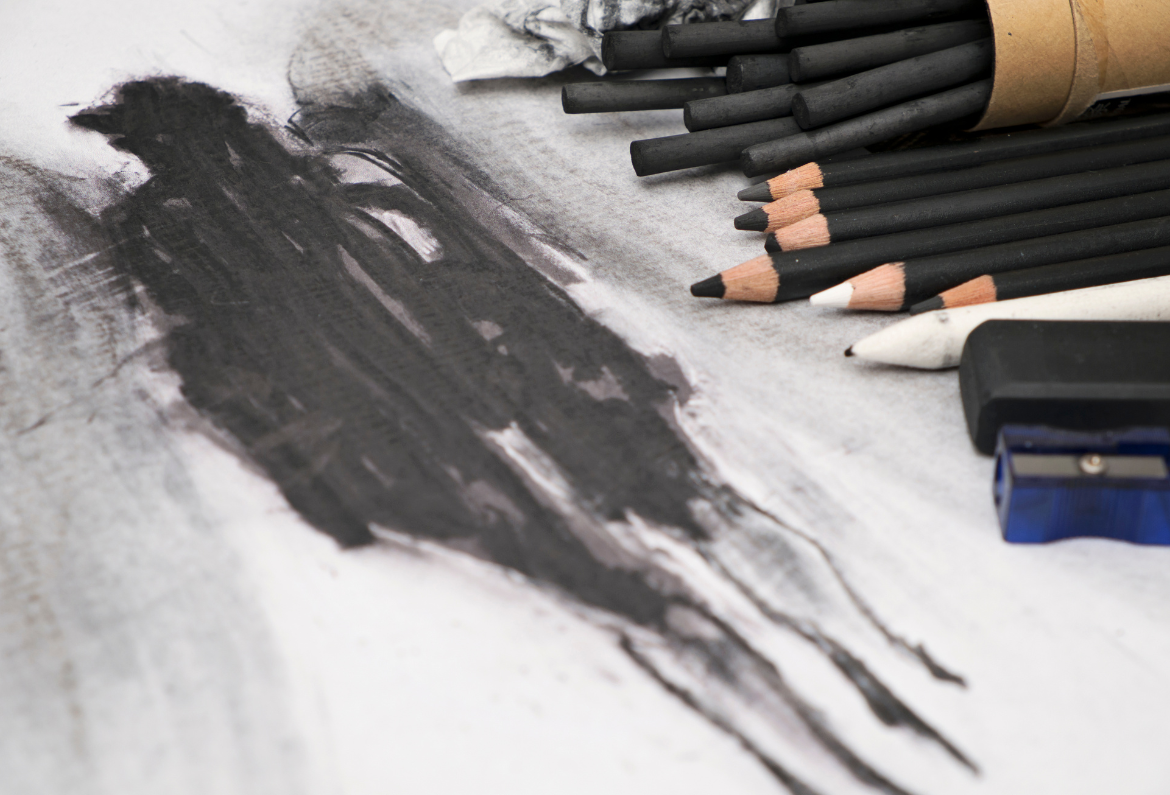The Art of Charcoal: Understanding the Different Types & Their Uses
Charcoal has been a timeless medium in the world of art — expressive, raw, and beautifully versatile. Whether you’re just beginning your artistic journey or refining your professional technique, understanding the different forms of charcoal can elevate your artwork and help you achieve the effects you envision.
Let’s explore the four main types of charcoal and how each one contributes to your drawing process.
1. Vine Charcoal
Soft, light, and perfect for sketching & blending.
Vine charcoal is made by slowly burning grapevine sticks into a soft, airy charcoal form. It produces light, delicate marks that easily blend and erase, making it ideal for sketching initial outlines or creating soft shading transitions.
Best for:
- Loose sketches
- Preliminary layouts
- Soft shading and atmospheric effects
Why artists love it:
It allows freedom and flexibility. Mistakes? Just wipe and rework. No fuss.
2. Compressed Charcoal
Bold, dark, and ideal for deep shadows & high contrast.
Compressed charcoal is formed by blending charcoal powder with binders and pressing it into sticks or blocks. Compared to vine charcoal, it is denser, richer, and delivers a powerful black tone.
Best for:
- Strong contrasts
- Dramatic shadow work
- High-impact drawings
Why artists love it:
It adds depth and drama. Perfect for when your artwork needs intensity and visual weight.
3. Charcoal Pencils
Precise, controlled, and great for detailing.
Charcoal pencils offer the same expressive quality of charcoal but with better control. Encased in wood, they allow for cleaner handling, sharp lines, and delicate details — making them a staple for artists who like precision.
Best for:
- Fine details
- Outlines
- Controlled shading and texture work
Why artists love it:
They’re easy to hold, easy to sharpen, and perfect for balancing structure with artistic freedom.
4. Powdered Charcoal
Smooth, soft, and excellent for backgrounds & gradients.
Powdered charcoal is literally charcoal ground into fine dust. Used with brushes, cotton pads, or blending tools, it creates soft, velvety textures — perfect for backgrounds or large gradient areas.
Best for:
- Smooth backgrounds
- Gradients and soft atmospheres
- Depth-building layers
Why artists love it:
It creates a dreamy, seamless tone that’s hard to achieve with sticks or pencils alone.

